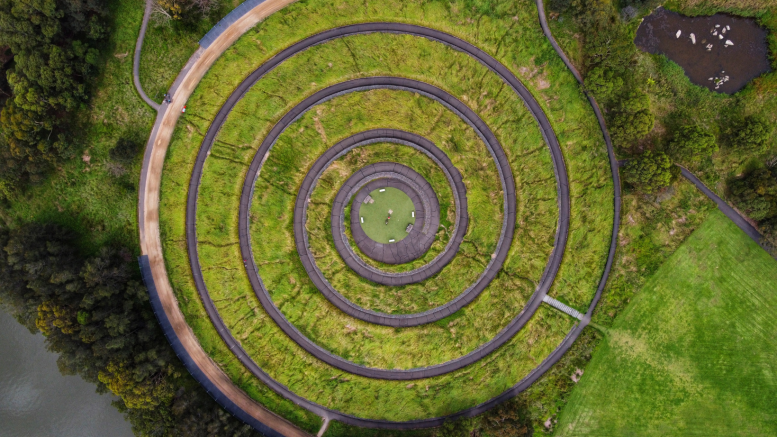What if circularity wasn’t just about recycling…
but about justice?
What if eliminating waste also eliminated
toxic burdens, environmental racism, and the economic violence
that has been dumped on Black, Brown, and frontline communities for generations?
What if circular systems became a pathway to
health, dignity, ownership, and long-term economic power?
We’re flipping the script —
because Black and Brown communities aren’t waiting for permission.
They are leading the transition to circular, regenerative economies —
and redefining what justice looks like in the process.
The Problem: Linear Economies = Environmental Injustice
For decades, frontline communities have been forced to live near:
- Incinerators
- Landfills
- Toxic waste sites
- Petrochemical plants
- Highways
- Refineries
- Polluting factories
These neighborhoods experience:
- Higher asthma rates
- Higher cancer rates
- Shorter life expectancy
- Fewer parks
- Underfunded infrastructure
- Limited economic opportunity
Waste and pollution are not accidents.
They are policy decisions —
burdens placed disproportionately on Black, Brown, Indigenous, and low-income communities.
Circular justice flips the script.
The Flip — Circularity as Justice, Community Power & Economic Renewal
Circular justice means:
- Pollution prevention, not pollution “management”
- Community-owned circular infrastructure
- Good green jobs where people live
- Zero-waste systems that eliminate toxic exposure
- Local production replacing extractive industries
- Youth-led climate and repair education
- Policy focused on equity, not efficiency
Circularity becomes a tool for repairing harm
and building community wealth.
Let’s look at what this looks like in real life.
Real Examples — Black & Brown Communities Leading Circular Justice
Example 1: PUSH Buffalo — Green Jobs for Climate Justice
PUSH Buffalo trains residents in:
- Building retrofits
- Weatherization
- Green construction
- Energy efficiency
- Community solar installation
Circularity becomes housing justice + job creation.
♻️ Example 2: LA Compost — Community-Led Soil Systems
In Los Angeles, Black and Brown organizers run:
- Neighborhood compost hubs
- School compost programs
- Community soil education
- Local “soil distribution” to gardens and farms
Waste becomes nutrient-rich soil —
managed by the people it serves.
Example 3: The Bronx’s Recycle-a-Bicycle & Community Bike Shops
Youth in the Bronx repair:
- Abandoned bikes
- Damaged parts
- Community donations
They learn mechanical skills, mobility justice, and circular repair culture.
Example 4: The Oakland Black Business Eco-District — California
Community enterprises create:
- Repair cafés
- Upcycling studios
- Circular fashion
- Low-waste retail
- Community manufacturing labs
A circular economy anchored in Black-owned businesses.
Example 5: South Central Farm Coalition — Los Angeles
Regenerative farming and composting projects led by Latinx families:
- Turn vacant urban land into food security
- Rebuild soil
- Create farmers’ markets
- Employ community youth
This is circular agro-justice in action.
♻️ Example 6: Cooperative Jackson — Mississippi
Black cooperatives advancing:
- Community-owned 3D printing labs
- Recycling & upcycling operations
- Sustainable manufacturing
- Agroecology farms
- Mutual aid networks
Circularity becomes self-determination.
Example 7: Indigenous-Led Zero Waste Programs — Navajo Nation & New Mexico
Programs focus on:
- Textile reuse
- Community repair
- Materials recovery
- Food waste composting
- Traditional land stewardship
Circular solutions rooted in cultural sovereignty.
Example 8: Flint, Michigan — Water Justice as Circular Justice
While fighting water contamination, Flint residents built:
- Local water testing labs
- Community filtration systems
- Youth-led water literacy programs
Justice-driven water circularity begins with community ownership.
Why Circular Justice Matters
Health
Eliminating toxic waste and pollution reduces:
- Asthma
- Cancer risks
- Heavy metal exposure
Economic Power
Circular systems create:
- Repair jobs
- Manufacturing jobs
- Composting jobs
- Materials recovery jobs
- Cooperative business opportunities
These jobs stay in frontline neighborhoods.
Climate Resilience
Zero-waste and circular economies reduce emissions at the root.
Community Ownership
Circular infrastructure builds:
- Local power
- Shared governance
- Community wealth
- Youth leadership
⚖️ Systemic Repair
Circular justice addresses root causes —
not symptoms.
5. What Communities Can Do Now
1. Start community repair cafés and tool libraries.
Skills + empowerment + jobs.
2. Create neighborhood compost and soil hubs.
Transform waste into local nutrient cycles.
3. Invest in Black & Brown cooperative enterprises.
Circular businesses = community wealth.
4. Push for EPR and zero-waste laws that prioritize justice.
Policy should protect frontline communities first.
5. Build community-owned reuse and remanufacturing centers.
Local processing → local jobs.
6. Integrate circular economy education in schools and youth programs.
Skills for a regenerative future.
7. Fight polluting infrastructure and replace it with circular alternatives.
Incinerators out — community composting, reuse hubs, and green jobs in.
6. The Big Shift
Circular economies aren’t just about materials.
They’re about power —
who benefits, who is protected, who thrives.
Black and Brown communities have always been on the frontlines of environmental harm.
Now they’re on the frontlines of circular solutions.
Circular justice flips the script from:
Dumping → Displacement → Disease
to
Regeneration → Ownership → Dignity
From pollution…
to prosperity.
From harm…
to healing.
Black & Brown communities are not just participating in the circular transition —
they’re leading it.
And the future is following.
